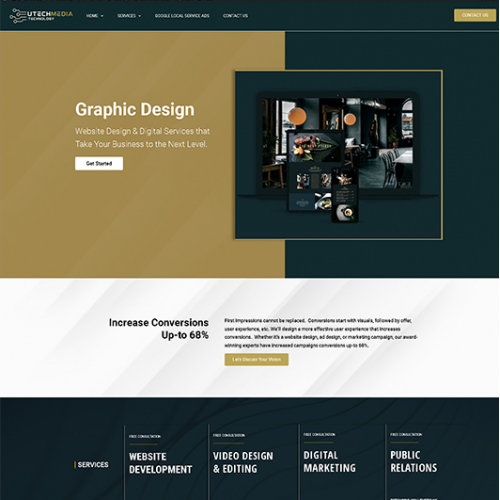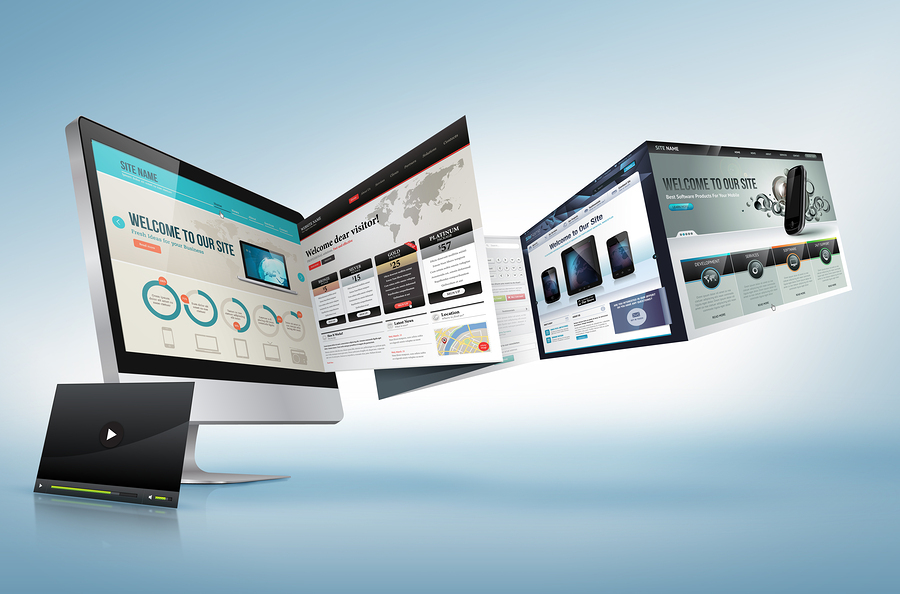The Relevance of Responsive Site Style in Today's Digital Landscape
In an age where digital interactions are significantly conducted throughout a myriad of gadgets, the value of responsive web site layout can not be overstated. A well-optimized site not only improves user experience yet likewise plays a crucial duty in improving SEO rankings, which are essential for on the internet presence. As mobile web traffic remains to rise, services that focus on receptive design setting themselves to satisfy user assumptions properly. The effects of this style method expand much past mere appearances; the future of online interaction might pivot on just how well companies adapt to these progressing standards. What factors should be considered to guarantee long-term success?
Enhanced Individual Experience
Enhancing customer experience is an essential goal of responsive site layout. A receptive web site adapts seamlessly to various display sizes and devices, guaranteeing that customers come across consistent use no matter of whether they are accessing the site by means of a tablet computer, mobile phone, or desktop computer - Website Design. This versatility is critical in today's electronic landscape where users anticipate immediate accessibility to information and services
Receptive design boosts navigating by maximizing format and content presentation based upon the device being utilized. This leads to decreased scrolling, streamlined food selections, and properly sized pictures, which all contribute to a much more instinctive surfing experience. Receptive sites load quicker on mobile gadgets, minimizing waiting times that can lead to customer frustration and prospective site abandonment.
Integrating responsive design not just boosts contentment yet likewise advertises customer interaction and retention. When individuals find web content that is very easy to accessibility and navigate, they are most likely to return and recommend the site to others. Ultimately, purchasing responsive web site design mirrors a dedication to conference customer needs, promoting a positive partnership in between the site and its target market, and boosting total brand name reputation.

Enhanced Search Engine Optimization Positions
One of the considerable advantages of responsive internet site style is its ability to enhance search engine optimization rankings. Internet search engine prioritize sites that give an optimum user experience throughout different devices. A receptive layout, which adjusts perfectly to various screen sizes, reduces bounce prices and motivates much longer website brows through-- 2 essential factors that affect online search engine formulas.
Web sites that are not optimized for mobile devices might face charges, leading to lower exposure in search results. By executing receptive layout, services guarantee that their material is obtainable and appealing, regardless of the tool being made use of.
Additionally, a solitary URL for both desktop computer and mobile versions streamlines the indexing procedure for online search engine, as they can easily comprehend the site and creep structure. This unified strategy gets rid of duplicate material issues, further improving SEO results. Ultimately, spending in a responsive internet site style is a calculated relocation that sustains greater internet search engine rankings, driving natural website traffic and enhancing general online presence.
Enhanced Mobile Website Traffic
The rise in mobile traffic has come to be a specifying characteristic of modern-day web her latest blog use, fundamentally improving how organizations approach their on-line existence. With an enhancing variety of customers accessing the web via smart devices and tablets, companies need to focus on responsive web site layout to guarantee ideal individual experiences throughout diverse devices.
As mobile traffic remains to rise, companies that stop working to adapt danger pushing away a considerable part of their audience. Website Design. A responsive design enables websites to automatically adapt to various display sizes and resolutions, providing smooth navigating and access. This flexibility is crucial, as poor mobile experiences can bring about high bounce prices and shed conversions
Additionally, the significance of mobile web traffic is underscored by online search engine like Google, which prioritize mobile-friendly sites in their ranking formulas. This change emphasizes the need for businesses to not only improve their mobile user interfaces yet likewise to consider user actions and choices when producing digital web content.
Eventually, embracing receptive website layout not only caters to the expanding mobile audience but additionally enhances brand trustworthiness and engagement, positioning businesses for success in a significantly mobile-centric digital landscape.
Economical Upkeep
Maintaining a receptive site design can dramatically cut down on lasting expenses for companies. By carrying out a single layout that adjusts to numerous devices, organizations remove the demand for numerous site versions, reducing advancement and maintenance expenditures. This streamlined strategy not only conserves resources however also streamlines updates and improvements.
With a responsive design, services can focus on enhancing one website as opposed to juggling a number of, making certain consistency in branding and individual experience throughout all systems. Furthermore, receptive websites tend to rate better in internet search engine, potentially lowering the prices associated with search engine optimization efforts.
When it involves updates, a look at this website merged platform suggests that new attributes or web content can be presented without the hassle of adjusting numerous unique sites. This performance permits quicker turnaround times, allowing businesses to reply to market modifications or consumer requires quickly.
Additionally, as modern technology develops and new devices arise, companies with receptive styles will deal with fewer challenges in adjusting their sites. This future-ready approach reduces the possibility of sustaining unforeseen prices connected with redesigns or system migrations. By focusing on responsive layout, business can attain long-lasting financial sustainability while keeping a competitive edge in the electronic landscape.
Future-Proofing Your Site
Preparing for the future of web style is important for companies aiming to remain pertinent in an ever-evolving digital landscape. As modern technology advancements, user assumptions change, necessitating web sites that not just look attractive yet also work seamlessly across different tools Our site and systems. Future-proofing your site entails executing adaptive style concepts that suit emerging technologies, such as voice search and fabricated intelligence.
To achieve this, companies ought to prioritize versatile designs, scalable graphics, and very little loading times. Accepting a mobile-first method makes certain optimum efficiency across the boosting variety of mobile customers. Website Design. Incorporating dynamic internet applications (PWAs) can boost customer experiences by giving quickly, dependable gain access to regardless of network conditions.
Routinely updating content management systems and frameworks is vital to keep protection and performance. In addition, using receptive style concepts permits web sites to change effortlessly to brand-new tools and display sizes. Organizations has to also consider accessibility criteria to guarantee inclusivity for all individuals.
Conclusion
In final thought, receptive web site design plays a crucial role in enhancing customer experiences in the modern electronic landscape. Ultimately, spending in receptive style makes certain adaptability to future technical advancements, strengthening brand name integrity and fostering long-lasting online presence in an ever-evolving digital setting.

Additionally, as innovation develops and new devices arise, services with receptive layouts will encounter fewer challenges in adapting their web sites.In conclusion, responsive internet site design plays a crucial role in enhancing user experiences in the contemporary digital landscape.
Comments on “Website Design Methods for Increased Conversion Rates”